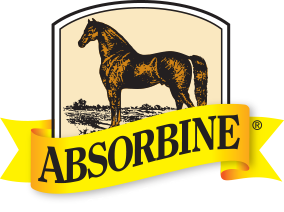When you compare fly spray, it’s important to look beyond the price tag and focus instead on the list of the active ingredients and the levels of those ingredients included in the formula. But you need to look closely, the amounts are usually in percentages, and those percentages are relatively small so it’s hard to see the difference.
Let’s say you have brand A and brand B. You look at the active ingredients and their percentages and see that brand A contains 0.05% permethrin and brand B contains 0.50% permethrin. That means there is 10 times more of the active ingredient in brand B. Which brand do you think will be more effective? Continue this comparison for each of the active ingredients listed and also look for the number of active ingredients in each formula to make an informed choice among the different brands of fly spray available. It’s easy to be disappointed by brands with very low levels of actives and therefore a lower price. With fly sprays, as with most things in life, you really do get what you pay for. You can read UltraShield fly Spray labels on each of the product’s pages. We encourage you to compare them to other manufacturer’s labels.
Water-Based or Oil-Based?
Another point when you go to compare fly sprays is whether they’re water-based or oil-based. There are advantages and disadvantages to both. Water-based fly sprays are not an irritant for most horse’s skin, and won’t attract dirt or dust. However, water-based sprays should also include synergists in the formula to keep them from breaking down in environmental conditions (sunlight, rain, sweat, etc.). Oil-based fly sprays quickly stick to the hair coat and provide rapid knockdown of insects by suffocating them when sprayed. However, due to the nature of oil, oil-based fly sprays will attract dirt and dust. In addition, oil-based fly sprays can irritate the skin of sensitive horses and some horses are prone to burning if they are sprayed with an oil-based product and then turned out in the sun. It’s not always easy to determine if a fly spray uses a water or an oil base. The easiest way to tell is to look at the bottom of active ingredient listing. If you see the statement, “Contains Petroleum Distillate” then you know the product is oil-based.
Ready-to-Use & Concentrates
You will be able to find on the label a section that tells you whether the product is “ready-to-use” or is a concentrate. Ready-to-Use products are good because they are already mixed to proper, effective levels. If you chose a concentrate, be aware that mixing fly spray to levels outside of what the label instructs, or adding additional ingredients may put your horse in harm’s way. You never know how two ingredients are going to interact with each other.
All-Natural Fly Repellents
Another option to consider when you compare fly spray are those which use natural ingredients. All-natural fly sprays provide a safe, alternative to chemical sprays. They are generally environmentally friendly, non-toxic, and insecticide-free. Natural fly sprays commonly use natural oils known to repel insects such as citronella, geraniol, eucalyptus, thyme, cedar oil, lemongrass, rosemary oil, and clove oil. You’ll notice on the label of natural fly sprays that they do not contain insecticides. This means that natural fly sprays will not kill insects. Instead, natural fly only repel insects. Because of this, natural fly sprays will not be effective at reducing the insect population around your barn. The ingredients in natural fly sprays also breakdown more quickly than their chemical counterparts and so they must be reapplied often, usually every 8 hours. However, natural fly sprays can be a great option for people looking to go green, or for people who may want to use fewer chemicals when the bug population is low in the early spring and late summer and fall.![]()
